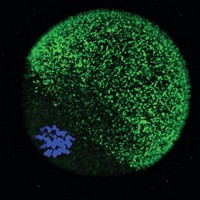Advertisement
Grab your lab coat. Let's get started
Welcome!
Welcome!
Create an account below to get 6 C&EN articles per month, receive newsletters and more - all free.
It seems this is your first time logging in online. Please enter the following information to continue.
As an ACS member you automatically get access to this site. All we need is few more details to create your reading experience.
Not you? Sign in with a different account.
Not you? Sign in with a different account.
ERROR 1
ERROR 1
ERROR 2
ERROR 2
ERROR 2
ERROR 2
ERROR 2
Password and Confirm password must match.
If you have an ACS member number, please enter it here so we can link this account to your membership. (optional)
ERROR 2
ACS values your privacy. By submitting your information, you are gaining access to C&EN and subscribing to our weekly newsletter. We use the information you provide to make your reading experience better, and we will never sell your data to third party members.
Biological Chemistry
Organelle Anatomy
Atomic-level scrutiny of neurotransmitter vesicles is a first
by Sarah Everts
November 17, 2006

The first depiction of an organelle right down to its molecular minutia has finally come to light. Using a combination of biophysical and proteomic techniques, European and Japanese scientists examined quantitatively the relative ratios of the lipids and 180 or so proteins that adorn synaptic vesicles, the compartments that house and traffic neurotransmitters essential for brain function (Cell 2006, 127, 671).
It's a "technical tour-de-force," comments Thomas C. Südhof, a medical researcher at the University of Texas Southwestern Medical Center. The group's 10-year endeavor has culminated "in the construction of the first atomic model for any organelle."
The "big surprise" was the overall density of protein on the membrane of these vesicles, says author Reinhard Jahn, a neurobiologist at Max Planck Institute for Biophysical Chemistry in Göttingen, Germany. "Almost a quarter of the entire membrane is taken up by the transmembrane domains of the vesicular proteins, and the surface of the organelles is almost completely covered by proteins."
"We all thought of membranes as lipid bilayers in which proteins float like icebergs in the sea," Jahn says. Instead, the membrane appears as a heavily packed "cobblestone pavement" of protein.
It turns out that so-called SNARE (soluble N-ethylmaleimide-sensitive factor-activating protein receptor) proteins are the most abundant in the vesicle. When a synaptic vesicle approaches another membrane, SNARE proteins on both membranes interact to create a bridge required for the vesicle to fuse with the membrane. This is essential for neural function: Neurotransmitter-filled vesicles in a neuron must fuse with the cell's membrane to release their contents into the space that separates one neuron from the next, a region commonly called the synapse. Once released into the synapse, the neurotransmitters trigger an electrical signal in nearby neurons. The high abundance of SNARE proteins in synaptic vesicles could increase the speed of fusion and, consequently, synaptic transmission, Jahn says.
The study also shows that synaptic vesicles have other types of SNARE proteins that allow the vesicles to fuse with unexpected organelle partners, including endosomes. Endosomes have many functions in the cell, including quality control of vesicle contents. Synaptic vesicles' excursions into endosomes "may serve to 'proofread' the composition of the vesicles and to sort out unwanted and/or damaged vesicle components," Südhof comments.
Next up, the researchers will focus on how vesicles that carry different neurotransmitters—such as glutamate or  -aminobutyric acid—differ from one another.
-aminobutyric acid—differ from one another.





Join the conversation
Contact the reporter
Submit a Letter to the Editor for publication
Engage with us on Twitter